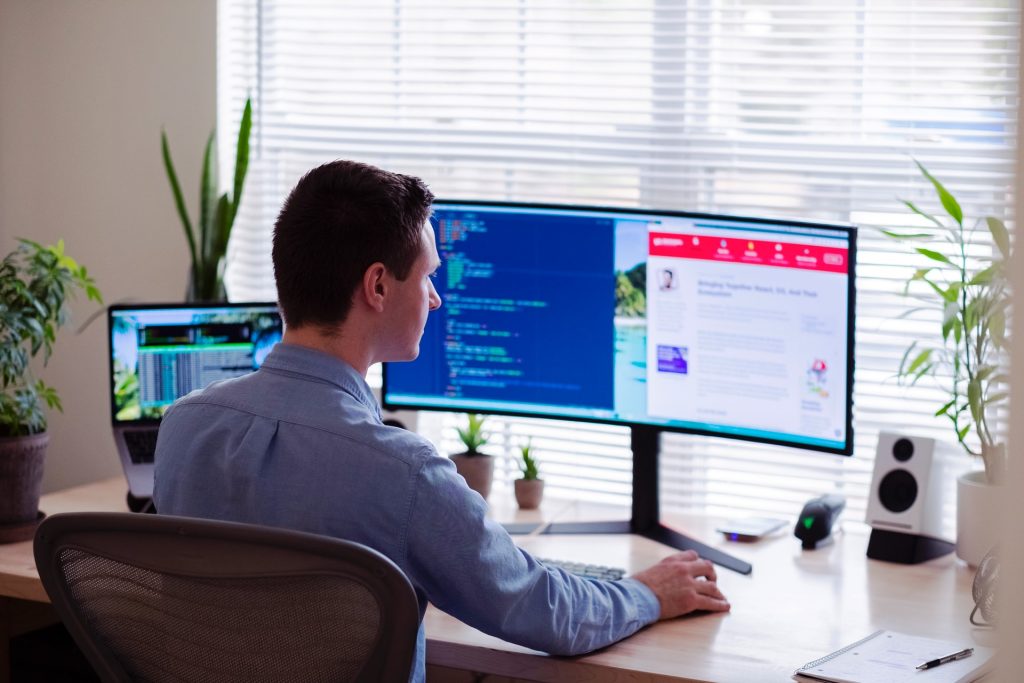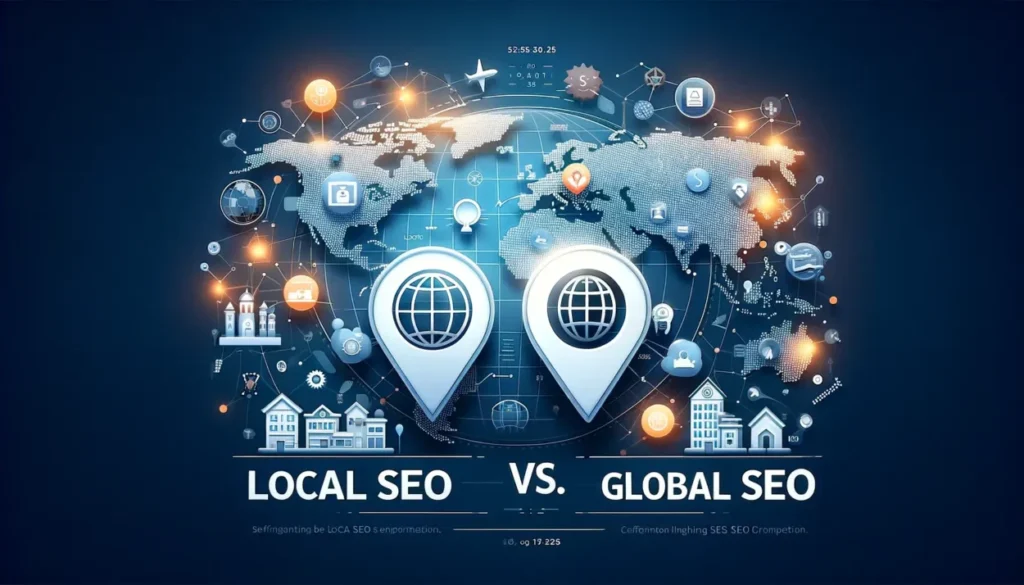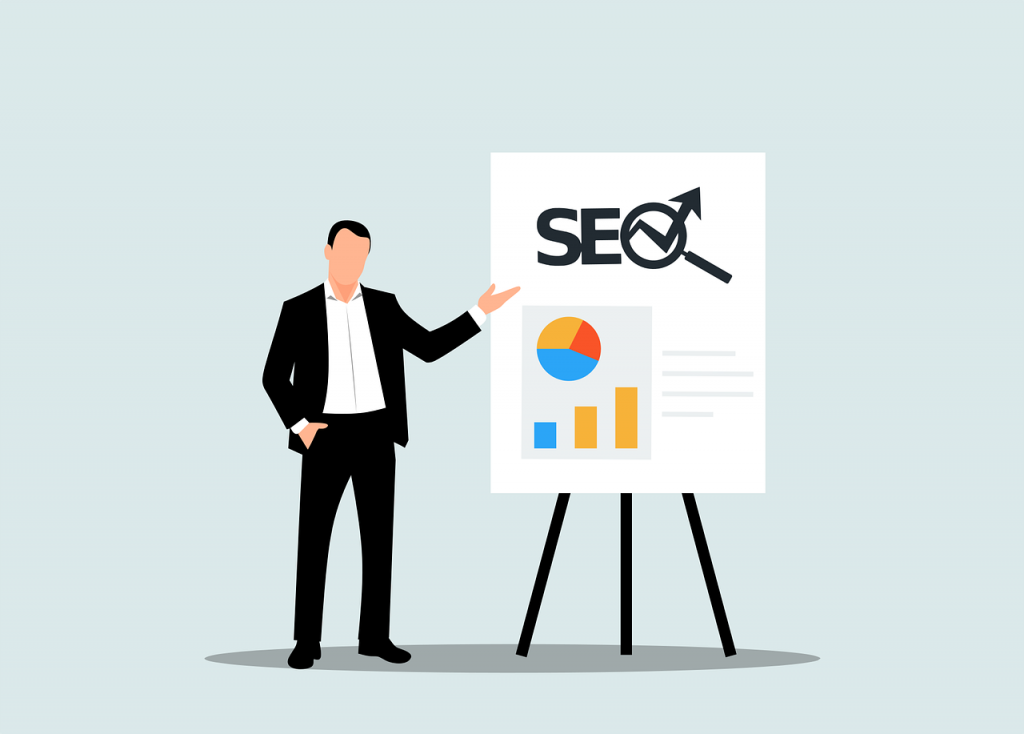As the digital landscape continues to evolve at a breakneck pace, the canvas of the web has blossomed into a mosaic of bold trends and innovative designs. This year has been no exception, with web designers weaving a tapestry of creativity that both captivates and engages users. From the depths of minimalistic elegance to the peaks of interactive experiences, the trends of the year have painted a vibrant and functional art form. Each stroke on the web’s canvas signals a shift towards immersive storytelling, where every color, shape, and line is a word in a visual narrative that enchants the virtual onlooker.
In this kaleidoscope of digital artistry, one witnesses the emergence of soft shadows and floating elements that bring a touch of depth and realism to the flat, orderly world of screen interfaces. The incorporation of organic shapes and smooth lines has also seen a surge, breaking away from the rigid grid-based designs of yesteryears and infusing a sense of asymmetrical beauty that mirrors the unpredictability of nature. These trends serve not merely as embellishments but as cornerstones of a user’s journey, guiding them through a delightful exploration of information and interaction.
Breaking Down Dominating Web Design Trends
As the digital landscape evolves, minimalist design has quietly taken center stage, captivating users with its clean lines and uncluttered aesthetic. Imagine a canvas where simplicity reigns, each element meticulously curated to ensure a serene user journey. This philosophy extends to the scrolling effects that have become a staple in modern interfaces, transforming a simple gesture into an interactive storytelling experience. Scrolling effects are now cleverly used to unveil content, engage visitors, and create a rhythmic flow that guides the eye with ease. Meanwhile, the embrace of organic shapes infuses a sense of natural harmony, their fluidity breaking the rigidity of traditional layouts.
The Rise of Minimalist Design in Web Design
As we turn the page on complex, cluttered interfaces, a new chapter emerges that celebrates the elegance of simplicity in website aesthetics. Picture a canvas where every element serves a purpose, where the visual clutter is stripped away to reveal the core of user experience—this is the essence of the minimalist approach to web design.
In this world of refined digital landscapes, less is truly more. Gentle whisperings of scrolling effects enhance the journey, guiding visitors through content with a graceful ease that feels like floating on a cloud. Interfaces become intuitive, almost second nature, as extraneous decorations bow out, leaving only what is essential.
Imagine, too, the harmonious integration of organic shapes, contrasting the sharp edges of traditional design, and providing a breath of fresh air that softens the digital space. These subtle curves and asymmetrical forms introduce a touch of the natural world, creating a soothing and inviting environment for users to explore.
The Impact of Scrolling Effects on User Experience
As we glide from one topic to another, let’s delve into the delightful world where web pages come to life with just a flick of your finger. Scrolling effects have blossomed into a cornerstone of interactive user experience, transforming the voyage through digital content into an exploration of visual storytelling.
Imagine a webpage where the journey down the screen is not just a mere slide of images, but a choreographed dance of elements that fade, pop, or playfully peek into view. Scrolling effects can make a user feel like a maestro, with each scroll hitting the right note and transforming static information into a rhythmical flow that enchants the eyes and captivates the mind.
Even the inclusion of organic shapes – those smooth, curvilinear forms that mimic the asymmetry found in nature – has been seamlessly integrated with scrolling effects to create an ecosystem of harmony on the screen. These fluid forms seem to undulate and adapt with each scroll, offering a sense of natural movement that makes the digital environment feel more alive and approachable.
Embracing the Power of Organic Shapes in Design
As we navigate through the ever-evolving landscape of web aesthetics, a refreshing wave of nature-inspired elements brings warmth to the digital canvas. Embracing the power of organic shapes, designers weave a tapestry of curves and asymmetry that break free from the rigid confines of geometric precision. These forms, reminiscent of the contours found in leaves, rolling hills, and meandering rivers, introduce a sense of comfort and fluidity into the user interface.
Crafted with a deft touch, these curvilinear features infuse websites with a layer of depth and dimensionality, creating a serene user experience akin to a stroll through a lush, digital garden. The unpredictable yet harmonious placement of these natural silhouettes fosters a unique visual rhythm, gently guiding the eye across the screen in a dance that feels both spontaneous and deliberate.
This approach not only captivates the imagination but also stands as a testament to the creative spirit that thrives within the realm of web design, proving that even in the virtual world, the allure of the organic remains undiminished.
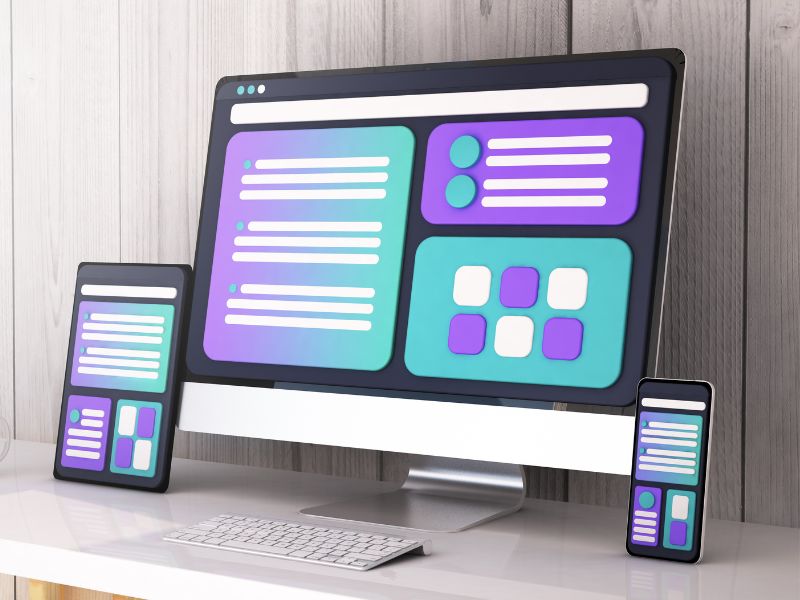
Exploring the Importance of Web Design Statistics
Imagine a bustling digital metropolis, where each website acts as a unique storefront. Here, standard website pages are akin to the welcoming entrance, guiding visitors through a delightful journey of content and discovery. As one delves deeper, the website performance becomes the heartbeat of the experience, determining whether a user stays engaged or slips away into the vast internet expanse. And in this online world, an error page serves as a crucial signpost, redirecting lost visitors with wit and charm, ensuring they remain within the warm embrace of the site’s navigational flow. Each element, meticulously crafted, plays a pivotal role in the symphony of user interaction and retention.
The Role of Standard Website Pages in Web Traffic
As we weave our way through the tapestry of effective online presentation, one cannot overlook the pivotal role that foundational web pages play in attracting and maintaining traffic. These are the digital storefronts where first impressions are meticulously crafted and where navigation bars beckon with the promise of seamless discovery.
Within this framework, the homepage stands as the bustling town square, where visitors are greeted with a warm welcome, a clear message, and a path to explore further. It’s the spotlight that shines on the most vital information, encouraging deeper engagement with the rest of the site. Similarly, the contact page acts as the inviting café, offering visitors a direct line to the site’s stewards, fostering communication and connection.
The about page, rich with narrative, paints a vivid portrait of the people behind the pixels, while the services or product pages are akin to vibrant market stalls, each displaying their wares with pride and precision. Together, these essential elements form the cornerstone of a website’s ability to captivate and keep visitors traversing its digital corridors.
The Influence of Website Performance on User Retention
As we sail away from the shores of prevailing design currents, let’s anchor our attention on a vital aspect that keeps visitors aboard the digital voyage: the seamless functioning and swiftness of a site. Imagine a web page as a bustling city street; the fluidity with which traffic moves can either spur a sense of ease or trigger a gridlock of frustration. In this bustling digital cityscape, the speed at which pages load and content unfurls is paramount to keeping an audience engaged. A mere second’s delay can cause interest to wane, leading to a significant plummet in retention rates.
Vividly picture a user poised to click, their anticipation hanging on the rapid reveal of information. Should this expectation meet the snail’s pace of a lethargic load time, the promise of swift access crumbles, potentially severing the connection with a valuable visitor. Thus, the swift operation of a site emerges as a silent sentinel, guarding the gateway to user satisfaction and steadfast loyalty.
The Importance of Error Pages in User Navigation
As we navigate away from the bustling intersections of web design’s most prevalent styles, let’s illuminate a frequently overlooked yet pivotal element of the digital landscape: the cleverly crafted misstep screens that guide users when they stray off the beaten path. These ingenious navigational beacons are vital in maintaining a seamless user journey through the digital realm.
Imagine a traveler in an unfamiliar city, where every wrong turn is met not with a daunting dead end but with a helpful signpost, pointing the way back to the main thoroughfare. Similarly, in the virtual world, a well-designed misstep screen serves as that friendly signpost, transforming potential frustration into a moment of delight and redirection.
These screens do more than merely signal an incorrect URL or a missing page; they engage visitors with creativity and wit, often incorporating playful imagery or clever wordplay that not only softens the hiccup in their journey but also reinforces the website’s branding.
The Ascendancy of Modern Web Design Trends
As the digital canvas blooms with creativity, gradient design inspiration tenderly whispers to the aesthetic senses, drawing eyes with its seamless blend of hues that mimic nature’s own palette. Transitioning into the realms of fantasy and future, scifi design emerges, its tendrils reaching into the past while pushing the envelope of the imaginable, evoking a sense of wonder and boundless possibility. Amidst these artistic currents, structured typography stands its ground, a beacon of clarity. Its crisp lines and deliberate forms offer a sturdy scaffold, guiding visitors through the web’s labyrinth with reassuring precision and a harmonious balance that marries form with function.
Unpacking the Appeal of Gradient Design Inspiration
As the digital canvas stretches into ever more creative realms, one cannot help but marvel at the visual feast that gradient designs offer. The allure of gradients in web design lies in their ability to infuse depth and vitality into a flat landscape, painting the screen with a seamless transition from one hue to another. This chromatic voyage beckons viewers, guiding their gaze across the spectrum with the promise of a horizon where colors dance in harmonious blend.
Coupled with structured typography, this approach elevates the aesthetic appeal while maintaining clarity. The gradients act as a dynamic backdrop, against which structured typography stands firm, offering clear navigation and legibility amidst the ephemeral color play. Designers are increasingly leveraging this synergy, where typography’s rigidity contrasts with the fluidity of gradients, crafting experiences that are both grounded and enchanting.
The Evolution and Influence of SciFi Design
As we navigate away from the realms of raw data and into the cosmos of creativity, the evolution of SciFi-influenced aesthetics beams us into a universe where imagination and innovation collide. This design ethos, reminiscent of a futuristic odyssey, captivates the digital space with its otherworldly allure. Interstellar motifs and neon glows serve as the north star for web designers, guiding them through the nebula of the ordinary and into the expanse of the extraordinary.
Vivid imagery reminiscent of science fiction blockbusters turns web pages into a visual spectacle that defies the conventional. Hypnotic backgrounds that mimic star-studded skies and interfaces that echo the intricate consoles of a spaceship bridge invite users into an interactive experience beyond their earthbound expectations. As the trend evolves, it melds with structured typography, creating a harmonious constellation where letterforms are meticulously crafted to echo the futuristic theme. This synergy of typography and SciFi elegance gives rise to digital canvases that are not only visually striking but are also anchored in the clarity and readability that structured typography provides.
The Growing Popularity of Structured Typography in Web Design
As we turn the page from statistics to trends, let’s delve into a captivating shift in the digital canvas. Imagine a world of letters and numbers not merely written, but architecturally constructed to guide the viewer’s journey through a website. This growing allure of typographic orderliness has reshaped how content is presented online.
A ballet of bold headers and delicate subtexts dances across screens, each font choice a thoughtful step in crafting the narrative. Hierarchical grids of text act as the bones of the webpage, with the flesh of content meticulously hung upon them. This methodical arrangement of type has become a beacon for clarity, beckoning users to follow the rhythm of carefully aligned sentences and purposeful paragraph breaks.
As whimsy meets precision, users are greeted with an experience where every character holds its ground, every sentence commands its space, and every message is delivered with an air of sophistication. The digital world is witnessing a renaissance where the art of typesetting is not just alive but thriving, inviting eyes to linger and minds to engage.
The Emergence of Cutting-Edge Web Design Trends
In the fluid tapestry of online expression, horizontal design sweeps across the screen, guiding eyes in a natural flow. This element dovetails elegantly with broken grids, shattered yet harmonious, offering a canvas where elements dance out of line twice, crafting a visual rhythm that defies the traditional. Amidst this dance, natural and organic textures emerge, whispering of earthy serenity and tactile depth in a digital realm. And within this textural embrace, pastel colors bloom softly, once, twice, thrice, and yet again, painting the web with a palette of tranquil hues that evoke a sense of calm sophistication.
The New Normal: Horizontal Design and Broken Grids
As we wave goodbye to traditional layouts that often felt constricted and formulaic, a new wave of creativity splashes across our digital canvases. The New Normal in web design is characterized by a playful disregard for conventional alignment, embracing the freedom and dynamic appeal of Horizontal Design and Broken Grids.
Imagine stepping into a digital landscape where content seems to glide seamlessly across your screen, unhindered by the once-ubiquitous vertical scroll. Horizontal Design lures the eye on a visual journey that’s both unexpected and enchanting. Palettes washed in pastel colors whisper across these fluid horizons, lending a touch of serenity to the browsing experience.
Meanwhile, Broken Grids shatter the predictable mosaic of content placement. Here, images and text blocks float in a harmonious disarray, as if caught in a gentle dance, defying gravity and expectation.
The Shift towards Natural and Organic Textures
As the digital tapestry of the internet continues to evolve, a delightful shift toward more earthy and elemental motifs in web design has emerged. The once sleek and polished surfaces now give way to a canvas that whispers of the outdoors, with web elements that mimic the tactile quality of materials such as paper, stone, and wood. This approach invites users to a serene experience, reminiscent of a stroll through a sun-dappled forest or the touch of sand between toes.
Designers are increasingly infusing their layouts with backgrounds that boast the subtle imperfections and rich details found in nature. These textured elements provide depth and warmth to websites, creating an inviting ambiance that encourages exploration. The interplay of shadows and light on these textures adds a layer of realism that is both refreshing and comforting.
Complementing this trend, the gentle hues of pastel colors occasionally bloom across the screen, offering a soft contrast to the ruggedness of the textures. This marriage of the raw and the refined creates a harmonious balance, welcoming visitors into a space that feels both innovative and familiar.
The Proliferation of Pastel Colors in Web Design
As the canvas of digital artistry continues to evolve, a gentle wave of soothing hues is washing over the landscape of internet aesthetics. The Proliferation of Pastel Colors in Web Design has emerged, bringing with it an air of serenity and approachability that captivates the visual senses. Picture a dawn sky suffused with the soft pinks and blues of early morning light, each webpage a reflection of tranquility. These subdued tones whisper rather than shout, offering a respite from the cacophony of bold, saturated colors that once held sway.
This subtle revolution in color schemes embraces a palette that can almost be tasted – the sweet mint of spring leaves, the delicate lavender of twilight, and the refreshing splash of melon sorbet. Designers are weaving these tender shades into backgrounds, fonts, and interactive elements, crafting interfaces that feel like a breath of fresh air. The choice of such a palette brings with it an aura of warmth and optimism, inviting visitors to linger in this digital embrace a moment longer.
Improving Website Design for Small Businesses
As the digital era flourishes, small business website design becomes the cornerstone of a thriving online presence. Imagine better websites as bustling marketplaces, where the allure of neatly arranged products draws in a steady stream of site visitors. The intersection of SEO & small business website design is like a well-trodden path through a lush garden, guiding potential customers with the sweet scent of relevance and user-friendliness. These visitors become explorers, eager to unearth new business ideas through commerce websites, each click unfolding a map to hidden treasures.
How Better Websites Lead to More Site Visitors
As the digital curtain rises on the evolving stage of online presence, small ventures find their spotlights intensifying with every enhancement in their digital facades. A well-crafted web presence acts like a beacon, guiding a stream of curious onlookers to explore the virtual aisles of products and services offered.
Consider the magnetic pull of a website that unfurls before the visitor with effortless navigation and engaging content. It’s akin to a welcoming storefront that invites passersby to step in and peruse. A delightful user experience, with pages loading at the speed of light and information displayed in a feast of clarity, keeps the audience captivated. As a consequence, footfall in this digital domain swells, mirroring the bustling crowd one might find in a beloved brick-and-mortar establishment during a grand opening.
Imagine the sweet symphony of well-placed calls-to-action resonating with the audience, beckoning them deeper into the site, where each click leads to a new discovery.
The Intersection of SEO and Small Business Website Design
As the digital sunrise marks a new day for virtual storefronts, one cannot overlook the harmonious dance between search engine optimization and the crafting of captivating online spaces for smaller enterprises. In the labyrinth of the internet, where every click leads to a potential customer or a missed opportunity, the fusion of SEO with aesthetic and functional design becomes the compass that guides a fledgling business to the treasure trove of increased digital footfall.
The palette of a website’s design isn’t merely about the hues and fonts that please the eye; it’s a strategic canvas where every stroke contributes to the visibility in the vast art gallery of search results. Keywords, those magical incantations, must be woven into the very fabric of the site’s narrative, ensuring that a query whispers the name of the business as a top result. Meta descriptions, the lore beneath the search result links, must tease the senses, beckoning the curious to explore what lies within.
Exploring New Business Ideas Through Commerce Websites
As the digital landscape continues to flourish, so does the opportunity for ventures to sprout and thrive online. Exploring innovative concepts through ecommerce platforms can be likened to planting seeds in a fertile digital garden, where the right blend of creativity and strategy can yield a bountiful harvest of traffic and transactions.
Ecommerce platforms serve as the canvas for an array of entrepreneurial visions, transforming a mere spark of innovation into a bustling marketplace. Here, the art of digital storefront creation blooms, where engaging product galleries become interactive exhibitions and checkout processes mimic the smoothness of a well-rehearsed ballet. Each click navigates through a storybook of offerings, where every chapter promises new discoveries and solutions tailored to the consumer’s quest.
The digital bazaar stands not merely as a transactional hub but as a stage for experimentation, where businesses can test the waters of untapped markets and niche products without the constraints of a physical location. These vibrant online emporiums are gateways to global audiences, their virtual shelves lined with the potential of untold prosperity.
The Power of Visuals: Stunning Examples in Website Design
In the realm of website design, product photography acts as a beacon, guiding the overall aesthetic and user experience. Each snapshot, meticulously crafted, can elevate a brand’s digital presence, weaving a narrative that captivates and persuades. Imagine flipping through a website design example lookbook, where pages come alive with images that resonate with clarity and purpose. As one delves deeper, the importance of related articles in website navigation becomes apparent, offering pathways to explore and expand the journey within a site. These articles, like hidden gems, enrich the user’s exploration, connecting threads of content through a tapestry of visual storytelling.
The Influence of Product Photography on Website Design
As the curtain rises on the next act of our digital theater, the spotlight shines on the stage of product photography, transforming the mundane into the magnificent. Imagine a world where images do more than just represent products; they evoke emotions, tell stories, and create an ambiance that entices and engages. This magical realm is woven into the fabric of website design, where the allure of high-resolution images, strategic lighting, and artistic compositions can elevate a simple online storefront into an immersive gallery.
The influence of product photography on website design cannot be overstated. It’s the silent ambassador of your brand, whispering tales of quality and craftsmanship through every pixel. With a keen eye for detail, the camera lens captures the essence of each product, from the gentle shimmer of a silk scarf to the robust texture of artisanal leather goods.
In the digital domain, these visual feasts not only captivate but also convert. They provide a window through which potential customers can envision the product in their lives, compelling them to take action.
Exploring a Lookbook of Website Design Examples
As a website blossoms from a functional platform into a showcase of identity, exploring a gallery of website design exemplars becomes less of a chore and more of an adventure for the senses. Imagine flipping through a digital lookbook, where each page unfurls a tapestry of creativity and innovation. Each example, a different chapter in a visual narrative, showcases how skillfully arranged elements can guide and delight the eye.
Vibrant colors leap from the canvas of the screen, while harmonious layouts beckon with an unspoken promise of elegance and usability. Subtle animations breathe life into static imagery, transforming a mere gallery into a dynamic visual journey. Typography, once the stoic sentry of information, now dances with an expressive flair that complements the overall aesthetic.
The curation of such a lookbook offers a treasure trove of inspiration, serving as a beacon for those eager to elevate their digital presence.
The Importance of Related Articles in Website Navigation
As we weave through the tapestry of website aesthetics, let’s nestle into the cozy nook of website navigation. Imagine a labyrinth of information where each turn and each corridor is thoughtfully connected, allowing for an enchanting journey of discovery. At the heart of this intricate maze lie the signposts of knowledge, gently guiding users to lands of content that resonate with their current interests: the strategically placed pointers to additional reading material.
These navigational beacons do more than fulfill a utilitarian purpose; they create an ecosystem of interconnected ideas, where each click is a leap into a new realm of exploration. The well-curated selection of suggested readings acts as a whispering gallery, echoing themes and expanding on the melody of the main content, providing a harmonious blend of information and engagement. As visitors are gently guided along this path, the experience transforms into a delightful stroll through a garden of articles, each bloom offering a new hue of insight, enhancing the overall visitor journey and ensuring a memorable passage through the digital landscape.
The Influence of Gamification on Web Design Trends
As the digital canvas stretches, gamified design has woven its playful threads into the tapestry of online experiences, enchanting users with interactive challenges and rewards. This allure marks a bold departure from the static beauty of print design, where once paper and ink held sway, now pixels and clicks foster a dynamic dance of engagement. Moving from the tactile to the digital realm, designers have embraced the fluidity of screens over the rigidity of paper, crafting digital landscapes that beckon visitors with their interactivity.
Decoding the Popularity of Gamified Design in Website Design
As we journey from the realm of striking visuals, a new facet of digital creativity unfolds, capturing the essence of play in the tapestry of web pages. The allure of gamification in online landscapes is not by mere chance; it’s a meticulously crafted strategy to spark interaction and joy. Picture a user, greeted not with static information but with a playful challenge, transforming a mundane visit into an adventure.
The draw of these game-like elements weaves into the user’s experience, offering rewards and progress indicators that tease the brain’s pleasure centers. A digital badge gleams for a task completed, a leaderboard ignites the spirit of competition, and suddenly, a web page is not just a page—it’s a stage for triumph and engagement. This clever infusion of gamification is not just about amusement; it’s about sculpting a memorable journey through the digital domain that resonates with the heart of human motivation—achievement and recognition.
In this landscape, where every click can turn into a reward, the popularity of gamification in web environments becomes clear:
The Transition from Print Design to Digital Design
As the digital canvas stretches beyond the bounds of traditional media, the evolution from tangible print to dynamic digital landscapes marks a pivotal shift in the realm of design. Imagine the tactile world of magazines and brochures, where each page turn revealed a static masterpiece of carefully curated typography and images. Now, transition to the fluid realm of digital interfaces, where the static becomes animated, and the once fixed compositions flow into interactive experiences.
This metamorphosis has ushered in an era where designers weave the richness of paper-based aesthetics into the flexible fabric of online realms. The printed grid, with its disciplined alignments and margins, transforms into a malleable framework that seamlessly adapts to various screen sizes. The permanence of ink on paper gives way to the transient glow of pixels, inviting a dance of light across the screen that captivates and engages.
Designers now orchestrate a symphony of visual elements that respond to gestures and commands, turning viewers into active participants in the narrative of the digital world.
The Power of Website Design in Engaging Visitors
As one emerges from the visual feast of expertly crafted online arenas, attention shifts to the power of website design in capturing and maintaining visitor engagement. A digital tapestry woven with interactive elements beckons audiences into a narrative, where each click unravels a new chapter of discovery. The strategic placement of enticing calls-to-action transforms passive observers into active participants, their journey through the site akin to an adventure, replete with rewards and revelations.
Engagement is not merely a fleeting moment but an enduring bond, forged by intuitive navigation and context-rich content that resonates on a personal level. Every pixel serves a purpose, guiding visitors with silent prompts to explore further, dive deeper. The allure of a well-crafted interface lies in its ability to understand and anticipate the needs of its beholder, creating an immersive experience that lingers long after the screen fades to black.
Understanding the Popularity of Website Design Trends
Gazing into the digital horizon, an overview of the popular website design trends of the year emerges, painting a vibrant tapestry that captures the imagination. As shifts in technology and user preferences unfurl, they propel the need to change website aesthetics and functionality, ensuring a fresh and engaging user experience. The power of web design weaves through the fabric of the digital landscape, with each thread contributing to a broader narrative of connectivity and innovation. It shapes the way information is consumed and interacted with, transforming the virtual world into an immersive and user-friendly environment.
An Overview of the Biggest Trends in Web Design This Year
As if turning the page to a new chapter in a vividly illustrated book, the digital canvas of the internet continually evolves with splashes of creativity and innovation. This year, the online landscape bursts with a palette of fresh trends shaping the face of web pages.
Immersive, full-screen video backgrounds become the storytelling tapestries that captivate audiences upon their arrival, offering a dynamic first impression. Bold, expressive typography dances across screens, no longer just a vessel for information but a central element of visual intrigue. The resurgence of retro aesthetics—think vibrant neons and pixel art—nods to nostalgia while infusing sites with personality.
Subtle animations breathe life into otherwise static experiences, creating a sense of interaction and engagement without overwhelming the senses. Dark mode aesthetics continue to gain favor, providing sleek interfaces that are easy on the eyes and exuding sophistication. Meanwhile, asymmetrical layouts challenge the grid, inviting curiosity with their unexpected and artful arrangement of elements.
The Influence of Change on Website Design Trends
As the digital world spins, it beckons change to sprinkle its magic on the canvas of online experiences. With each passing year, the landscape of web aesthetics ebbs and flows, responding to the pulsating rhythms of technology and user behavior. This metamorphosis of visual storytelling on the internet unravels how adaptability shapes the core of the digital tapestry.
In this dynamic dance, the gentle embrace of user preferences and the firm handshake with technological advancements serve as the twin engines propelling the evolution of online aesthetics. Novel interfaces bloom, reflecting the zeitgeist, with vibrant hues of interactivity and accessibility defining their very essence. From the playful dalliance of animations that guide the eye, to the symphony of layouts that break free from the monotonous grids, each innovation narrates a tale of change.
Swept by this tide, the ebullient spirit of change demonstrates its influence, ensuring that the digital realm remains a kaleidoscope, constantly shifting to offer a fresh panorama of immersive experiences.
The Power of Web Design in Shaping the Digital Landscape
As we navigate away from the playful universe of gamification, let’s delve into how the artistry of web composition holds the power to mold the digital terrain. It’s a canvas where creativity meets innovation, painting the ever-evolving masterpiece that is the online world.
The power of web composition cannot be overstated in its ability to shape the digital landscape. Each year, fresh and vivid trends emerge, setting the stage for immersive digital experiences. These trends become the brushstrokes that define the aesthetics and functionality of the digital realm. A website’s interface acts as the front door to a brand’s digital presence, and how it’s designed can either invite users in with open arms or present a barrier that’s hard to cross.
The power of a harmonious interface is immense: it can direct user flow like rivers carving through digital valleys, foster engagement with the warmth of a welcoming host, and encapsulate a brand’s ethos with the precision of a master painter.
The Role of Web Design in Enhancing Website Visitors’ Experience
In the bustling online marketplace, captivating web design serves as the cornerstone of small business triumph. Each pixel, meticulously crafted, beckons potential customers, fostering an ambiance of professionalism and trust. To transform browsing into engagement, a website must exhibit essential elements — swift loading times, intuitive navigation, and responsive layouts that adapt to the latest web design trends, ensuring an effortless experience for all users.
As these trends evolve, so does the synergy between aesthetics and search engine optimization. Strategic design choices, such as optimized images and mobile-first layouts, whisper to search algorithms, enhancing visibility in a crowded digital landscape.
The Impact of Web Design on Small Business Success
As a bridge between the allure of current web design trends and the tangible benefits they can bring, let’s explore how they serve as a catalyst for small business success. The kaleidoscope of colors, the interplay of text and images, and the seamless navigation – all these elements of design converge to create an online presence that can either elevate a small business to new heights or leave it languishing in obscurity.
Imagine a quaint local bakery, its digital storefront a reflection of the warmth and aroma of freshly baked bread. Here, web design is not just an aesthetic choice; it’s the inviting smile that greets every potential customer. It’s the ease with which one finds that irresistible chocolate croissant, and the seamless checkout process that turns a curious browser into a satisfied patron. When small businesses harness the power of effective design, doors open to a bustling marketplace where their offerings shine brightly amidst a sea of competition.
The Essential Elements of a High-Performing Website
Imagine a digital landscape, a harmonious blend of visuals and functionality, welcoming guests with open arms. In this realm, the essential elements of a high-performing website coalesce to form an oasis of user-friendly navigation and engaging content. At the heart of this digital sanctuary lies a responsive layout, fluid as a stream, ensuring seamless access on any device, from the grandeur of a desktop to the compactness of a smartphone.
Navigation bars, intuitive as a hometown’s streets, guide users to their desired destinations without a hint of confusion. Speed, the silent sentry of user satisfaction, ensures that each page loads with the swiftness of a falcon in flight, keeping the ever-fleeting attention of the audience firmly anchored. Content, the soul of the site, blossoms in relevance and value, providing answers like a wise sage to the seeker’s questions.
Above all, a high-performing site embodies trust through secure transactions and transparent privacy policies, building an unshakeable bridge between business and consumer.
The Influence of Modern Web Design on SEO
As we weave through the tapestry of digital aesthetics, the influence of fresh and contemporary design on search engine optimization (SEO) emerges as a beacon, guiding websites through the dense forest of online competition. The dance between aesthetics and functionality has never been more intricate, with search engines favoring sites that not only captivate the eye but also speak the language of algorithms fluently.
The embrace of innovative layouts and navigation schemes has proven to be more than a visual delight; it serves as a siren call to search engines, signaling a website’s commitment to providing a seamless and engaging user journey. This alignment with the principles of user experience (UX) is rewarded by search engines, which prioritize websites that cater to the ease and satisfaction of the audience’s digital voyage.
Moreover, the thoughtful integration of responsive design ensures that the website’s allure translates seamlessly across a multitude of devices, thus amplifying its reach and favorability in the eyes of search engine crawlers.
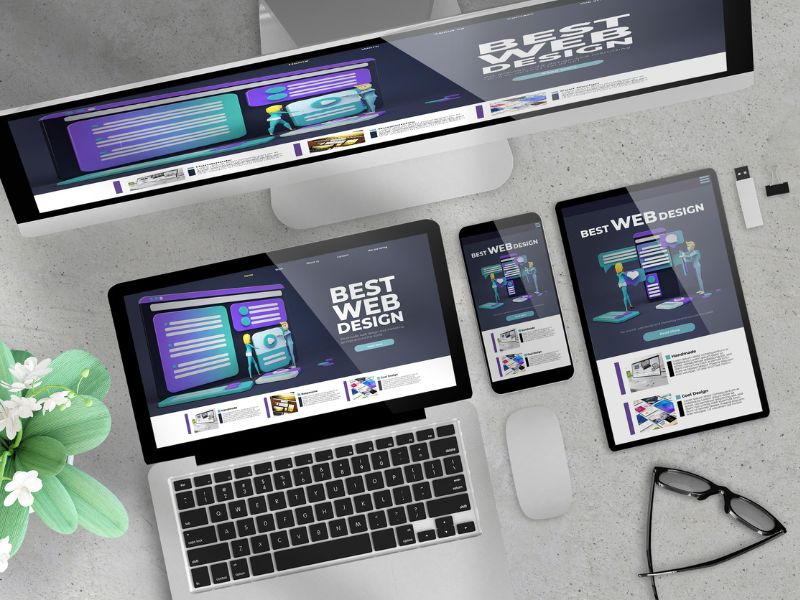
Harnessing the Power of Website Design for Business Growth
Embarking on fresh entrepreneurial ventures, the allure of a well-crafted digital presence cannot be overstated. As the digital façade of innovation, a meticulously constructed interface invites exploration, fostering a nurturing ground for nascent concepts. The delicate dance of aesthetics and functionality enhances the journey through virtual realms, shaping perceptions and molding experiences. A harmonious blend of visual appeal and navigational ease holds the power to captivate and retain those who wander into these digital domains. In the bustling online marketplace, a storefront that resonates with clarity and charm can be the cornerstone of triumph, propelling e-commerce endeavors to dazzling heights of success.
The Impact of Web Design on New Business Ideas
As dawn’s golden fingers unfurl over a landscape of online enterprises, the canvas of web creativity becomes a pivotal arena where nascent entrepreneurial concepts take flight. In the bustling digital bazaar, a well-crafted online presence acts as a beacon, guiding potential clientele through myriad virtual alleyways to discover the blossoms of fresh business ventures.
The artful arrangement of pixels and codes, far more than mere visual pleasure, breathes life into fledgling market ideas, transforming them into palpable experiences for digital explorers. A harmonious blend of aesthetics and functionality serves as the wind beneath the wings of start-up dreams, lifting them from the drawing board into the hearts and minds of a global audience.
An intuitive and inviting layout, infused with the right palette of colors, fonts, and imagery, whispers the story of a brand, fostering an immediate bond with curious onlookers. It is within this digital tapestry that embryonic concepts mature into robust enterprises, each click and interaction sewing the seeds of tomorrow’s business success stories.
The Role of Web Design in Enhancing Site Visitors’ Experience
Bridging from the pivotal role web design plays in visitor satisfaction, one discovers that the artistry behind each webpage serves as a silent conductor, orchestrating a symphony of user experiences. Envision a tapestry of colors, woven together to guide the eye with ease, paired with fonts that speak in soft whispers or bold declarations, depending on the narrative the canvas of the screen wishes to portray. Navigation transforms into a seamless journey, where interactive elements invite clicks with the promise of discovery, and loading times become nearly imperceptible, keeping the digital traveler engrossed.
With each pixel purposefully placed, the design of a website becomes not just a backdrop, but a dynamic participant in the dialogue between the brand and its audience. It’s a world where harmony between visual appeal and functionality is not just desired but essential. For in the embrace of a well-crafted design, users find not only information but an invitation to return, time and time again, to a virtual space that feels both new and familiar.
The Influence of Web Design on E-Commerce Success
As if by magic, the tapestry of a well-crafted online storefront can enchant and beckon digital window-shoppers, transforming them into loyal patrons. In the bustling marketplace of e-commerce, the allure of a shop’s virtual façade holds the power to not only catch the eye but also to captivate the heart, steering the success of online businesses.
The nuanced symphony of colors, the strategic placement of calls-to-action, and the seamless flow from page to page create a harmonious user journey akin to a walk through a meticulously landscaped garden. Here, each element serves a purpose, guiding visitors with subtle cues and creating an atmosphere of trust and ease.
Imagine the checkout process as a gentle stream, guiding the customer swiftly from selection to purchase, free of cumbersome obstacles. A well-thought-out design can significantly reduce cart abandonment, turning potential exits into satisfying transactions.
In essence, the influence of a digital emporium’s visual and functional design on its prosperity cannot be overstated.
The Future of Web Design: Trends to Watch Out For
As the digital landscape unfurls before our eyes, forecasting the important web design trends becomes akin to gazing through a kaleidoscope of innovation—where creativity shapes the future with each turn. Imagine a canvas where pioneering ideas meld with the dynamic whims of consumer tastes, crafting an ever-evolving masterpiece of digital experiences. The magic lies in the synergy between inventive minds and shifting preferences, leaving a trail of enchanting, user-centric designs that beckon with their allure. Each pixel, a star in the cosmos of the Internet, aligns to guide us through the constellations of tomorrow’s online universe.
Predicting the Next Big Trends in Web Design
As the digital tapestry continues to evolve, the crystal ball of web innovation offers a glimpse into a future where the creative landscape is both vibrant and dynamic. Predicting the next significant shifts in web aesthetics is akin to capturing the essence of a kaleidoscope – ever-changing and richly hued with possibility.
The horizon teems with web creations that promise to enchant the visual senses. Immersive experiences beckon, with interfaces that react in a symphony of light and sound, responding to every movement and command like living organisms. Virtual reality may soon leap from the world of gaming into the mainstream, offering three-dimensional canvases on which designers can craft experiences that wrap around the user, creating a cocoon of digital interaction.
Artificial intelligence, once the realm of science fiction, now whispers of a future where it shapes web canvases, crafting personalized journeys that adapt to each unique interaction. As this technology matures, expect a blossoming of web environments that are intuitive, learning from each click to present an ever-more tailored experience.
The Role of Innovation in Shaping Future Web Design Trends
As the digital landscape blossoms, innovation becomes the gardener shaping the aesthetic and functional aspects of future online interfaces. The Role of Innovation in Shaping Future Web Design Trends is a canvas where creativity and technology blend to paint a future of immersive experiences.
In this world of constant technological evolution, interactive elements are evolving beyond mere clicks and taps. Picture a tapestry of web interfaces that respond dynamically to users’ voices, gazes, and even gestures, crafting a symphony of engagement where every interaction is an orchestration of the latest technological marvels. Imagine augmented reality transforming the flat planes of screens into a playground where reality and the digital realm coalesce, offering a multisensory feast to the end-user.
Artificial intelligence, too, is weaving its threads into the fabric of web design, rendering designs that adapt in real-time, learning from each interaction to deliver a more personalized and intuitive experience. The innovation in web design is not just about aesthetics; it’s about creating a living, breathing entity that grows smarter and more sophisticated with each passing day.
The Impact of Evolving Consumer Preferences on Web Design Trends
As the digital landscape blossoms, the petals of consumer preferences unfurl, painting a vivid picture of the future. The whims and wishes of those who navigate online realms profoundly steer the course of design innovation. No longer mere spectators, these discerning digital denizens wield influence, and their evolving tastes reshape the online tapestry with each click and swipe.
Picture a horizon where web pages morph to mirror the fluidity of consumer desires, where each visit feels like a tailor-made experience. The clamor for lightning-fast load times, coupled with the allure of immersive storytelling, compels designers to weave functionality with finesse. The surge in mobile browsing demands designs that fit seamlessly into the palms of hands, ensuring that convenience and clarity reign supreme.
Visual feasts emerge as the norm, with vivid hues and bold imagery taking center stage to captivate and engage. The push for authenticity prompts a shift towards designs that reflect the raw, unfiltered essence of brands, inviting an audience on a journey of genuine connection.
The Transformative Power of Web Design: Case Studies
In a digital age where the canvas of the internet continually evolves, fresh approaches to web crafting are reshaping industries far and wide. Visual narratives now unfold through engaging interfaces, inviting users into a dance of interactivity that can sway consumer loyalty. As businesses harness the art of online aesthetics, case studies reveal the profound influence web presentation wields on commercial triumph. The tapestry of traffic and engagement woven by innovative online spaces becomes evident through real-life examples, where each click and hover holds the potential to turn casual browsers into ardent advocates.
How Modern Web Design Trends Are Reshaping Industries
As we navigate away from discussing the horizon of digital aesthetics, let’s anchor our attention to the remarkable ways in which contemporary digital design is revolutionizing various sectors. Industries far and wide are feeling the ripples from the splash of innovative design practices, reshaping the way they interact with their digital audience.
In the world of e-commerce, online storefronts are becoming more than just a place to shop; they are immersive experiences. Vivid storytelling through interactive narratives captures the essence of a brand, elevating customer journeys from mundane transactions to memorable adventures.
Healthcare websites, once sterile and utilitarian, now offer soothing color palettes and intuitive interfaces, making the search for information a less daunting task for patients and providers. This gentle approach has been instrumental in fostering trust and comfort for users seeking medical guidance.
Hospitality services have also turned the page, employing dynamic layouts and rich media to showcase their offerings. The allure of sumptuous visuals and engaging content on these platforms entices potential guests to explore and book their next getaway with a simple click.
The Role of Web Design in Driving Business Success: Case Studies
As the digital landscape continues to evolve, so does the pivotal role of web design in carving the path to business triumph. Delving into the heart of how design can be a catalyst for success, numerous case studies illuminate the transformative effects of intuitive and appealing digital interfaces.
One such example is an online retailer that saw a dramatic surge in sales after revamping its virtual storefront. The redesign focused on streamlining the user’s journey, highlighting the elegance of the products with high-definition imagery, and simplifying the checkout process. The result? A significant boost in conversion rates and average order values.
Another case study revolves around a service-based company that reimagined its website to better communicate its brand story. By incorporating engaging visuals and interactive elements that resonated with the target audience, the company not only increased the time users spent on the site but also elevated the number of inquiries and client engagements.
These success stories underscore that a well-crafted digital presence is not just an aesthetic statement but a powerful business strategy that can lead to measurable growth and customer loyalty.
The Impact of Website Design on User Engagement: Real-Life Examples
As the digital horizon stretches ever forward, the tapestry of online engagement becomes increasingly vibrant through innovative site designs. These masterpieces of creativity are not only visually enthralling but also pivotal in forging deep connections with users.
Take, for instance, an e-commerce platform that introduced an interactive story feature, guiding shoppers through a curated journey of products. The result? A bustling hive of activity, with users spending more time exploring collections and a significant uptick in sales. Another example lies in a charity’s website which, through a combination of emotive narratives and compelling imagery, saw an outpouring of support and volunteer sign-ups, highlighting the profound impact that thoughtful design can have on user engagement.
Furthermore, a travel blog that implemented an immersive photo gallery experienced a surge in shared journeys, prompting an increase in followers eager to see the world through this fresh lens. Each of these real-life instances underscores the magnetic allure of well-crafted design—a beacon that draws in curious eyes and encourages them to linger, interact, and connect.
Conclusion
In the ever-evolving digital landscape, the canvas of online interfaces bursts with a kaleidoscope of engaging visuals and interactive experiences. Each pixel seems to dance with purpose, guiding the user through a seamless journey of discovery and delight. The fusion of aesthetics and functionality creates a symphony of user engagement, where each click uncovers a new layer of innovation.
Looking into the horizon, the evolution of online interfaces promises to unfurl new chapters of creativity and efficiency. As businesses harness the vibrant power of thoughtful design, they cultivate growth and connection in the digital ecosystem. The future beckons with a promise of designs that not only captivate but also convert, shaping the way for an enthralling digital tomorrow.

